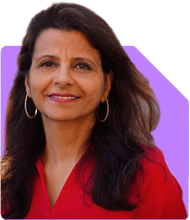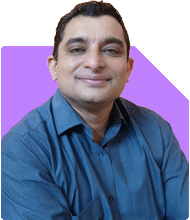Komal Jethmalani | Answer |Ask -Follow
Dietician, Diabetes Expert - Answered on Dec 14, 2020
She specialises in weight loss and diabetes management.
Jethmalani has completed her MSc in food and nutrition from SNDT University and trained at Jaslok Hospital.
She is a NDEP-certified diabetes educator.... more

Dear Komalji
Pranaam!
Thank you for your service in helping people like me.
I am female, 45, getting fit for first time.
I am 5”3, 75 kilos, age 44.
What is best exercise for me -- yoga, walking, zumba or something else?
How I should change food habits?
Poonam
Fitness is very essential for maintaining a healthy lifestyle.
Incorporate healthy food habits and focus on body toning to start with.
Include foods like whole grains, fruits and vegetables as a source of fibre and good protein sources like milk and milk products, eggs, legumes and lean meat.
Avoid high fat, high sugar, packaged foods, fruit juices, alcohol, etc.
Follow a regular schedule of exercise that includes cardio and strengthening exercises.
Drink plenty of water to remain hydrated.
You may like to see similar questions and answers below
Komal Jethmalani | Answer |Ask -Follow
Dietician, Diabetes Expert - Answered on Feb 02, 2022
Komal Jethmalani | Answer |Ask -Follow
Dietician, Diabetes Expert - Answered on Aug 22, 2022
Roopashree Sharma | Answer |Ask -Follow
Yoga, Naturopathy Expert - Answered on Aug 29, 2022

One of my earlier articles captures how one can begin their wellness journey. It has the answers to all your questions. You can read it here.
Remember that a healthy diet and routine is the first step towards wellness -- but only if practised consistently.
In wellness, those who are slow but steady always win; therefore persistence is more important than following stringent diets/heavy workouts and then letting it go!
Please move gradually into the regime so your body can cope up and doesn’t want to give up.
Dr Shakeeb Ahmed Khan | Answer |Ask -Follow
Physiotherapist - Answered on Apr 28, 2024
Dr Dipankar Dutta |1837 Answers |Ask -Follow
Tech Careers and Skill Development Expert - Answered on Dec 05, 2025
Dr Shyam Jamalabad |108 Answers |Ask -Follow
Dentist - Answered on Dec 05, 2025
Dr Shyam Jamalabad |108 Answers |Ask -Follow
Dentist - Answered on Dec 05, 2025
Dr Shyam Jamalabad |108 Answers |Ask -Follow
Dentist - Answered on Dec 05, 2025
Dr Dipankar Dutta |1837 Answers |Ask -Follow
Tech Careers and Skill Development Expert - Answered on Dec 05, 2025
Ulhas Joshi |280 Answers |Ask -Follow
Mutual Fund Expert - Answered on Dec 05, 2025
Dr Dipankar Dutta |1837 Answers |Ask -Follow
Tech Careers and Skill Development Expert - Answered on Dec 04, 2025
Ravi Mittal |676 Answers |Ask -Follow
Dating, Relationships Expert - Answered on Dec 04, 2025
Anu Krishna |1745 Answers |Ask -Follow
Relationships Expert, Mind Coach - Answered on Dec 04, 2025
Anu Krishna |1745 Answers |Ask -Follow
Relationships Expert, Mind Coach - Answered on Dec 04, 2025


























